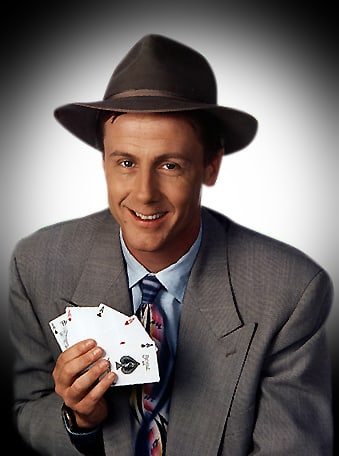 |
| San Francisco Call, 29-July-1900 |
The drawing is from the 29-July-1900 San Francisco Call. William A Coulter did many maritime drawings for the newspaper. The Boxer Rebellion was a nationalist, anti-colonialist uprising in China. Many European countries and the US sent troops to relieve the siege of the diplomatic quarter in Beijing. The US Army transport Hancock was assigned to the Navy in 1902 and served as a transport and then a receiving ship at Pear Harbor until 1925. I don't know why an army transport was carrying both Army soldiers and Marines, except that the Marines were ready to make a rapid deployment.
The not-very-historical movie 55 Days at Peking told the story of the siege and the relief.
East Street is now called The Embarcadero. Ocean Wave was a ferry operated by the Santa Fe Railroad between Point Richmond and San Francisco. Ocean Wave had just gone into service at the beginning of July.
SOLDIERS AND SAILORS OFF
FOR SEAT OF WAR IN CHINA
THE transport wharf is once more re-echoing to the martial tread of troops. Soldiers are being hurried to China and a subdued air of excitement once more permeates the waterfront. Yesterday soldiers and marines were coming and going all day long between the ferries and the troopship Hancock, while the wharf and its vicinity was crowded from early morning until nightfall.
The transport Hancock was to have got away at 2 p. m., but owing to the non-arrival of the soldiers' baggage it was after midnight before she got out into the stream, where she anchored. Early this morning she will get away for Taku, stopping at Nagasaki en route.
It is many a long day since San Francisco saw such a gathering of marines as paraded along East street yesterday. They came 500 strong from the recruiting stations at New York, Annapolis, Washington and Boston and are a very fine body of men. It required two trips of the Ocean Wave to bring them from Point Richmond to San Francisco. Companies A and C came over on the 8 a. m. trip, while Companies B and D reached this side at 11:20 a. m.
When the marines reached the transport wharf they were greeted with ringing cheers by the men o£ Batteries A. D, I and O of the Third Artillery, which preceded them an the Hancock. The Third Artillery band was also there and played familiar airs throughout the day. The favorite with all hands was "There'll Be a Hot Time." The band does not accompany the regiment, but the men went to the wharf in a body to bid their comrades good-by.
Off for the Front.
The complete list of those who will sail on the Hancock is as follows: Batteries A, D, I and O of the Third Artillery; Companies A, B, C and D of marines; Major Hugh Gallagher and four clerks; eighteen officers of the Marine Corps; seventeen privates of the Hospital Corps; nine men of the Signal Corps; ten recruits for Light Battery F, Fifth Artillery; seven recruits for the Ninth Infantry and ten nurses.
When the Navy Department determined to enlist a battalion of marines the command was given to Major Randolph Dickins. The major is well known in San Francisco and a host of friends were down to wish him godspeed yesterday. He was here for some time as captain of marines on the Philadelphia, but shortly before the war was transferred to the Oregon and accompanied that vessel on her famous run around the Horn to Cuba. He served throughout the Spanish war on the battleship and at its conclusion was promoted to be a major and placed in command of the barracks at the Washington Navy-yard.
Company A of the battalion is officered by Captain McKelvey and Lieutenants Mathews and Baxtrom. It was recruited in New York. Captain Dutton is in command of Company B. He is the son of W. J. Dutton of this city and has served in Manila. Company C was recruited at Charleston navy yard, Boston. Its officers are Captain Moses and Lieutenants McDougald and Taylor. Lieutenant Hirshinger of Mare Island accompanies the battalion as adjutant.
Lieutenant Colonel John H. Calef was to have gone out in command of the four batteries of the Third Artillery, but he did not get here in time, so Captain Charles Humphreys went out in command of the battalion.
Major Hugh J. Gallagher goes to China to be chief commissary on General Chaffee's staff. He takes his own clerks along and expects to have plenty of hard work keeping the army supplied during the march to Peking.
There were many bitter partings when the hour for sailing came along and then as the minutes passed and there was no sign of the big transport getting away the women took heart of grace and began to smile again.
Some wily waterfront rats hit on a great scheme to make money and did a land office business in flasks of whisky until the police found them out. They secured a Whitehall, loaded her with the whisky, and getting under the wharf passed up twenty-five cent flasks, charging fifty cents for them, as fast as they could be handled.
Police Stop the Game.
Soon a number of the soldiers and marines began to get hilarious and then the police "smelt a rat." They secured one of Henry Peterson's boats and made a search under the wharf, but the whisky traders saw them getting into the boat and easily made their escape. No more liquor got on the wharf by that route.
Many of the men attempted to take large bottles of whisky aboard the transport, but in every instance it was taken from them by the officer on watch and smashed against the. side of the ship.
The next transports to get away for China will be the Meade from this port and the Garonne from Seattle. Both vessels leave on Wednesday, August 1. The Meade is to take away one battalion of the Fifteenth Infantry, one squadron at the Third Cavalry and one company of engineers; in all sixty officers and 1071 men. The Garonne takes away two squadrons of the First Cavalry and 100 recruits; in all thirty-five officers and 950 men.
Loving Cup for Bradley.
Prior to the sailing of the Hancock a very pleasing Incident took place. Captain Bradley, quartermaster captain of the transport, was presented with a magnificent loving cup. It came from the members of the Philippine Commission that was sent to Manila on the Hancock by the Government. Captain Bradley was of great service to these gentlemen and they wished to remember his kindness and courtesy.
When the members of the Commission got back to New York they sent the silver out of which the cup is made to Shreve & Co. of this city. A design accompanied the silver. Shreve &. Co. made the loving cup and yesterday it was presented to Captain Bradley. It is a massive affair of chaste design and Captain Bradley is justly proud of it.
More Soldiers Coming.
Word was received at army headquarters yesterday that Lieutenant Colonel Williams, with companies A, I, K and L of the Fifteenth United States Infantry, would arrive in this city this evening. Company E of the battalion of engineers is expected to arrive here this morning. The home battalion of the Twenty-third Infantry, which came from Manila on the transport Warren, reached the Presidio late yesterday afternoon on the McDowell. They were met at the wharf by the band of the Third Artillery and a detachment of the Eighteenth Infantry, commanded by Captain P. D. Evans, who escorted it to the camp vacated by the Third Artillery, which they will occupy
until ordered East.
Four troops of the Third Cavalry are due here Monday night.
The general hospital received forty-six patients from the Warren. Seventeen patients -were discharged yesterday and assigned to duty with the convalescents.
Thirteen insane soldiers now at the Presidio are booked for transportation to Washington, to be confined in the Government hospital for the insane.
First Lieutenant Leigh A. Fuller, assistant surgeon. U. S. A., is in this city waiting the arrival of the Third Battalion of the Fifteenth Infantry, to the commanding officer of which he will report for assignment to duty.
Captain Charles Wilcox is assigned to duty with the Ninth Cavalry on its arrival in this city.
Acting Assistant Surgeons H. C. Many and W. W. Reno are assigned to duty at the general hospital, Presidio, awaiting transportation abroad.
 |
| San Francisco Call, 29-July-1900 |






































